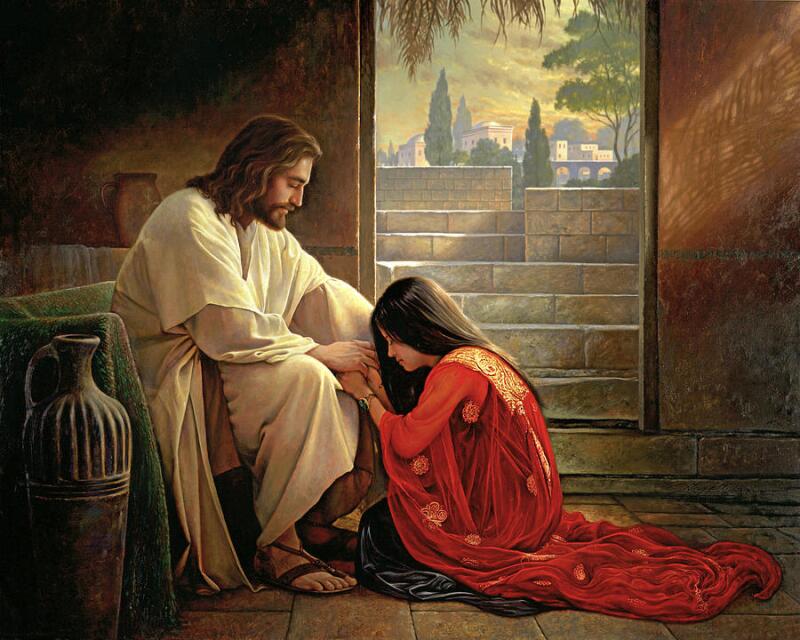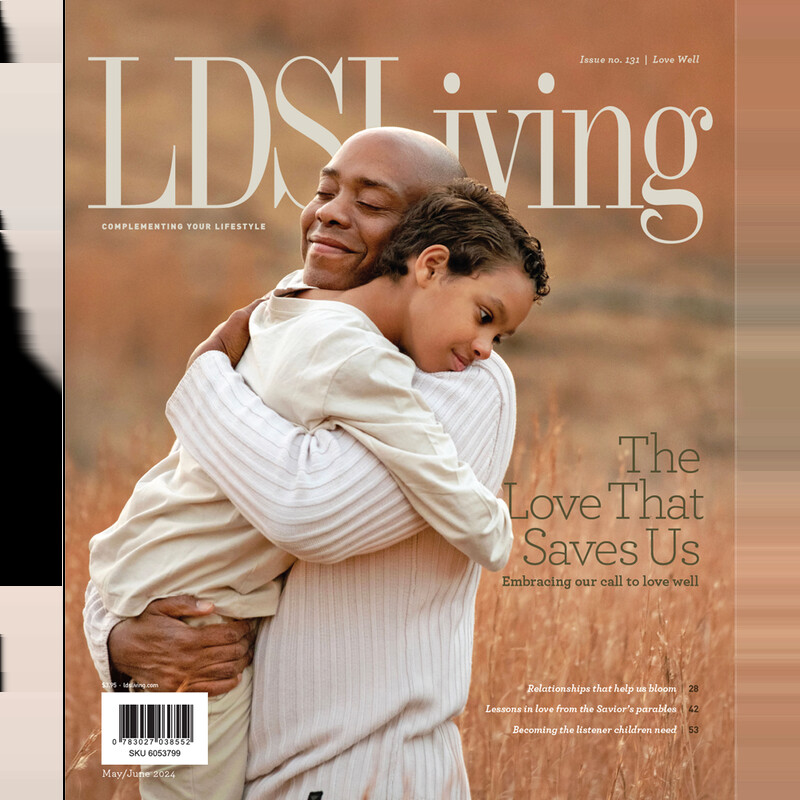In recent years, one of my favorite approaches to scripture study has been to search for patterns—instances where similar phrases occur repeatedly. Elder David A. Bednar has said:
“In my judgment, diligently searching to discover connections, patterns, and themes…can open the floodgates of the spiritual reservoir, enlighten our understanding through His Spirit, and produce a depth of gratitude for the holy scriptures and a degree of spiritual commitment that can be received in no other way.
Consider a scriptural pattern that can strengthen our devotion to Jesus Christ. In Nephi’s vision of Savior’s life, Nephi saw, “many fall down at [Jesus’s] feet and worship him” (1 Nephi 11:24).
Falling down before Christ and worshipping him is a scriptural pattern:
- When the wise men saw Jesus, they “fell down, and worshipped him” (Matthew 2:11).
- John the Revelator saw a vision of twenty-four elders who “fell down and worshipped” Jesus (Revelation 5:14).
- When Christ appeared to the multitude at the temple, “They did fall down at the feet of Jesus and did worship him” (3 Nephi 11:17).
- In modern times, the Savior has commanded, “You shall fall down and worship the Father in my name” (Doctrine and Covenants 18:40).
Falling Down and the Tree
The importance of falling down before Christ is emphasized in Lehi’s vision of the tree of life. In his vision, Lehi saw four groups of people. The first group wanted to get to the tree but never grabbed hold of the rod of iron. They were lost in the mists of darkness.
Another group went straight for the great and spacious building. But two groups made it to the tree. Both these groups caught hold of the iron rod but a key difference between them is what happened after they got to the tree.
Lehi tells us that the second group, “after they had partaken of the fruit of the tree…did cast their eyes about as if they were ashamed” (1 Nephi 8:25). These people looked over at the great and spacious building and saw all the people “mocking and pointing their fingers towards those who had come at and were partaking of the fruit.
And after they had tasted of the fruit they were ashamed, because of those that were scoffing at them; and they fell away into forbidden paths and were lost” (1 Nephi 8:27–28).
What was different about the group that stayed at the tree? “They [came] holding fast to the rod of iron, until they came forth and fell down and partook of the fruit of the tree” (1 Nephi 8:30).
Of the two groups who made it to the tree, some fell away, and some fell down, but neither did both. Perhaps because it’s hard to fall away from Jesus when you’re falling at His feet.
Falling Down or Falling Away?
The group that fell down at the tree was still scoffed at. The difference is that they didn’t pay attention to the mockers. Lehi said the people in the great and spacious building “did point the finger of scorn at me and those that were partaking of the fruit also; but we heeded them not” (1 Nephi 8:33, emphasis added).
A key part of falling down at Jesus’s feet is not worrying about what others are saying. We focus on Christ, not the crowd.
Another key to falling down at Christ’s feet is to stay focused on him—distraction is one of Satan’s greatest tools. In his book Heart of the Matter, President Russell M. Nelson shared what he called the “Parable of the Bee and the Butter.”
On a warm summer night, he and Sister Nelson were eating outside when a bee kept buzzing around their food. After numerous attempts to shoo the bee away, they finally let him land on some butter and feast on it.
President Nelson wrote, “Moments later he was dead. In a matter of minutes, this energetic bee progressed from temptation, to indulgence and then to death. He succumbed to a distraction that trapped and then destroyed him. The lesson is obvious. Your ultimate safety lies in never taking even the first enticing step in a direction you do not want to go” (pages 15–16).
As we truly fall down at the Savior’s feet, we are completely focused on Him. We don’t pay heed to those who scorn, and we aren’t distracted by the shiny things of the world.
▶ You may also like: A more hopeful way to see the ‘lost’ ones in Lehi’s dream—and in our lives
Falling at the Savior’s Feet Today
How can we remember to fall at the Savior’s feet today? Perhaps one key is to spend more time pondering how much we really need Him. Consider a pattern in those who met Christ:
- When “Peter saw [the miraculous catch of fish], he fell down at Jesus’ knees” (Luke 5:8. emphasis added).
- “A man full of leprosy…seeing, Jesus fell on his face” (Luke 5:12, emphasis added).
- “When [the man possessed by demons] saw Jesus, he cried out, and fell down before him” (Luke 8:28, emphasis added).
- “[Jairus] fell down at Jesus’ feet.” (Luke 8:41, emphasis added)
- “The woman [with the issue of blood]…came and fell down before [Jesus]” (Mark 5:33, emphasis added).
- The leper who returned to give thanks to Jesus, “fell down on his face at [Jesus’s] feet” (Luke 17:16, emphasis added).
- When Mary, the sister of Lazarus, saw Jesus, she “fell down at his feet.” (John 11:32, emphasis added).
Each of these individuals felt a deep need for Jesus Christ and so fell down at his feet. As we take time to contemplate the Savior’s supreme sacrifice for us, we will naturally want to fall at his feet and worship him.
At the last day, “every knee shall bow” before Jesus Christ (Mosiah 27:31). Between now and then some will fall away and some will fall at Christ’s feet. Jesus spoke of people who “in time of temptation fall away” (Luke 8:13) and warned that if we are not careful, we can “fall into temptation” (Doctrine and Covenants 20:33).
Instead of falling away, let’s choose today to fall at His feet. As we do so we will experience the “love of God, which sheddeth itself abroad in the hearts of the children of men…[it is] most joyous to the soul” (1 Nephi 11:22–23).



